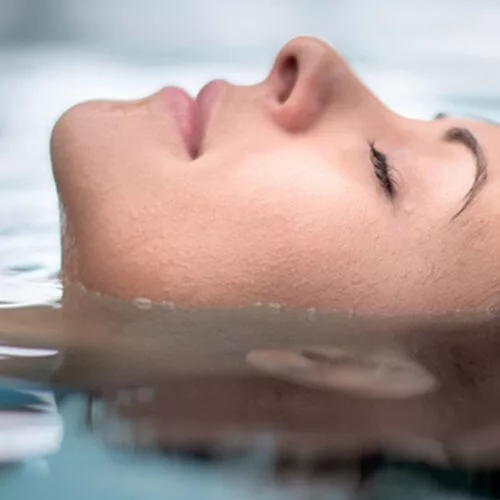We recently got talking to a young person who is trying Floatation Therapy and we were curious to hear about how she got on and whether it helped her pain symptoms and this is what she said.
Floatation Therapy
As a teenager who has a chronic pain condition, I am always trying to find different ways to find some relief and add to my ‘survival kit’. After seeing someone speak online about their experience with Floatation Therapy, and the benefits they found, I decided to research into it to see if it was something that may be beneficial for me. I found somewhere local that offered Floatation Therapy and read about all of the benefits that were possible. I decided to give it a try for myself, and safe to say I had a very positive experience and really enjoyed it! During the float I felt minimal pain and was able to fully relax, which is never usually possible. Yes, the idea of being in a ‘pod’ in the dark, with my own thoughts for an hour was scary, but this fear soon lifted once the session had started. Afterwards, for the first time in 8 months, I experienced being practically pain free for a couple of hours. According to my family I had a noticeable glow and looked much more relaxed. I haven’t yet had the time to go back for another session, but this is something that I definitely will be doing, and I hope to build it into my pain management routine.
So what actually is Floatation Therapy? It is the experience of lying in a floatation tank (sometimes known as a sensory deprivation tank) filled with water and high levels of Epsom salts. External stimuli are minimised (light, sound and all sources of physical discomfort), to allow the mind to enter a meditative state. Whilst in the floatation tank, you enter a state of REST (Reduced Environmental Stimulation Therapy), which allows you to experience the full benefits. A few of the reported benefits are: it aids muscle relaxation, balances hormones and increases brainwave activity. It also increases speed of recovery from injury, aids better sleep and reduces stress and anxiety.

What does it feel like? At first, being in a floatation tank may feel overwhelming as it is an unusual experience, with no natural stimuli. However, the relaxing lighting and music is likely to put you at ease and aid relaxation. You have the option as to whether you want the pod fully closed or left open a little so that you can see the rest of the room that you are in, knowing that you can get out if necessary. Most people opt to leave it open slightly for the first few times, and then feel comfortable enough to close it fully. There is always a button inside the tank to be able to open it and contact reception in case of emergency or any queries.
Where can I find a floatation tank?
There are a few places that provide floatation therapy in the Midlands. Some are listed below: They are also available throughout the UK.
Spa Float – Leamington Spa, Spa Float Therapy | Warwickshire’s first Floatation Therapy Spa
The Floating Spa – Birmingham, http://www.thefloatingspa.com/
Time to Float – Stafford, https://www.timetofloat.co.uk/
Go Deep Floatation – Spridlington, https://www.godeepfloatation.com/
Shropshire Floats – Shrewsbury, https://www.shropshirefloats.me/
The Float Space – Newark, https://www.thefloatspace.co.uk/
Lincolnshire Float Lab – Lincoln, https://www.lincolnshirefloatation.co.uk/
Everlong Floatation Therapy – Cambs, https://l.facebook.com/l.php?u=http%3A%2F%2Fwww.everlongfloatation.com%2F%3Ffbclid%3DIwAR0tykzYQ6dTuEIqgfvm5YoZK7DjX_NgBwyE1lrrm9uf2TSLgmyPp2sD8WI&h=AT00a4T_jCKEeRQtuKtxRWw6lrnulNDq2ovmzBvJcdOsr1MD3Nv7x3tzB3Lkc293ZwSOhgdrsE6pvm9ZuBWac2XrL6HoE8rAA3tBZ2D0u5LPQ1gmsbWrWYY6SgnB-rceglYs_Q


